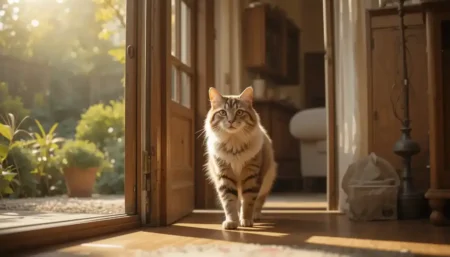Looking for a cat that won’t disturb your neighbors? The top 10 quietest cat breeds for apartment living are Ragdoll, British Shorthair, Persian, Maine Coon, Russian Blue, Birman, Exotic Shorthair, American Shorthair, Scottish Fold, and Sphynx.
These breeds combine low‑volume vocalizations with the adaptability needed for small spaces, making them perfect companions for city dwellers.
Below, we explore each breed’s personality, care requirements, and practical tips to keep your home peaceful.
What Makes a Cat Quiet?
A cat’s “talkativeness” isn’t random—it’s shaped by genetics, age, health, and environment. Understanding these factors helps you choose a feline that naturally stays low‑key.
- Breed genetics – Some lines, such as Persians and Russian Blues, have been selectively bred for calm temperaments and softer vocal cords.
- Age – Kittens chatter while exploring; adult cats usually settle into quieter patterns.
- Health – Dental pain, hyperthyroidism, or anxiety can trigger frequent meowing.
- Environment – Stressful stimuli—loud neighbors, cramped litter boxes, or sudden changes—often make cats louder.
By addressing health and habitat while selecting a breed predisposed to quietness, you create the best conditions for a low‑noise companion.
How to Choose the Right Quiet Breed for Your Lifestyle
Not every silent-style cat fits every apartment dweller. Use the checklist below to match a breed to your routine, space, and personal preferences.
| Consideration | Questions to Ask Yourself | Why It Matters |
|---|---|---|
| Space | Do you have high shelves or a balcony? | Some breeds (e.g., Maine Coon) love vertical climb‑spaces. |
| Time at Home | Are you home most of the day? | Social breeds like the Sphynx thrive on constant human contact. |
| Grooming Tolerance | Can you brush your cat weekly? | Long‑haired cats (Persian, Birman) need regular grooming. |
| Allergies | Do you or a housemate have cat allergies? | Hairless breeds (Sphynx) produce fewer allergens, but still need bath‑time care. |
| Budget | What’s your monthly pet‑care budget? | Larger breeds often eat more; grooming tools add cost. |
| Noise Sensitivity | Do you work from home or need quiet nights? | Low‑vocal breeds (British Shorthair, Russian Blue) are best for quiet environments. |
Choose the breed that aligns with the most items on your list—this will naturally reduce stress‑induced vocalizations.
The Top 10 Quietest Cat Breeds for Apartment Living
Below is a detailed look at each of the top 10 quietest cat breeds for apartment living. Each breed entry follows the same structure for easy comparison.
1. Ragdoll

History & Origin – Developed in 1960s California, the Ragdoll earned its name because it goes limp when held.
Vocalization Level – Soft, infrequent meows; most communication is through purring and slow blinks.
Temperament – Extremely affectionate, they often follow owners from room to room and enjoy lap time without demanding attention vocally.
Grooming Needs – Semi‑long coat, weekly brushing to prevent matting.
Ideal Apartment Setup – A sunny window perch, a cozy cat bed, and a few interactive toys keep this laid‑back cat happy.
Extra Note – Ragdolls are genetically predisposed to calmness, making them ideal for first‑time apartment owners.
2. British Shorthair
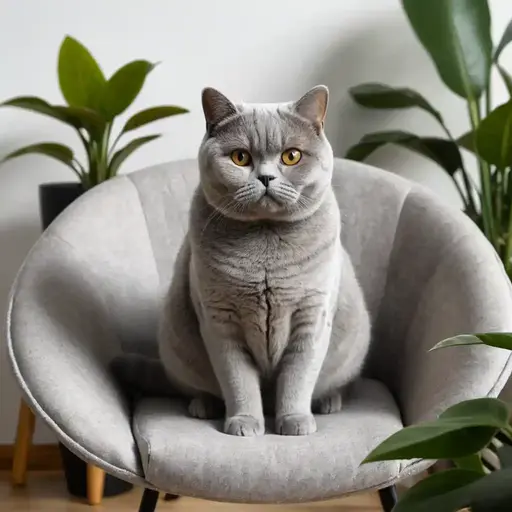
History & Origin – A sturdy, teddy‑bear‑looking breed from Victorian England; originally a farm cat turned show star.
Vocalization Level – Very low; relies on body language (tail flicks, ear positions) to express needs.
Temperament – Independent yet friendly; enjoys gentle cuddles but doesn’t demand constant attention.
Grooming Needs – Low; a quick weekly brush removes loose hair.
Ideal Apartment Setup – A solid cat tree and a sunny spot on a bookshelf satisfy its love of observation.
Extra Note – Known for “silent judgment,” they often stare you down without a single meow.
3. Persian
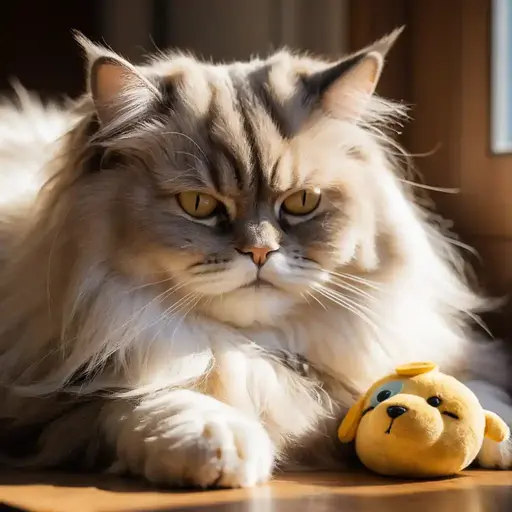
History & Origin – A classic long‑haired breed dating back to ancient Persia; bred for companionship in palaces.
Vocalization Level – Whisper‑quiet; communicates through soft purrs and gentle nudges.
Temperament – Placid, prefers a calm household and loves to be a lap‑cat on quiet evenings.
Grooming Needs – Daily brushing and regular face cleaning due to their brachycephalic (flat) faces.
Ideal Apartment Setup – A dedicated grooming area, a plush bed, and a calm corner free from loud appliances.
Extra Note – Their flat faces lower vocal projection, contributing to their hushed nature.
4. Maine Coon
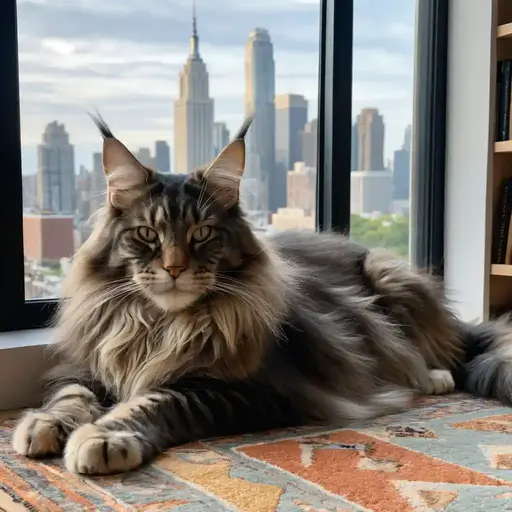
History & Origin – Originating in New England, the Maine Coon is North America’s largest domestic cat, known for its rugged looks and friendly disposition.
Vocalization Level – Soft chirps and trills replace loud meows; their “voice” is melodic but muted.
Temperament – Social, loves families; enjoys high perches and gentle play.
Grooming Needs – Regular brushing (2–3 times weekly) to manage its thick, water‑repellent coat.
Ideal Apartment Setup – Tall cat trees, sturdy scratching posts, and a window shelf for bird‑watching.
Extra Note – Often called “quiet watchdogs,” they remain alert without sounding the alarm.
5. Russian Blue
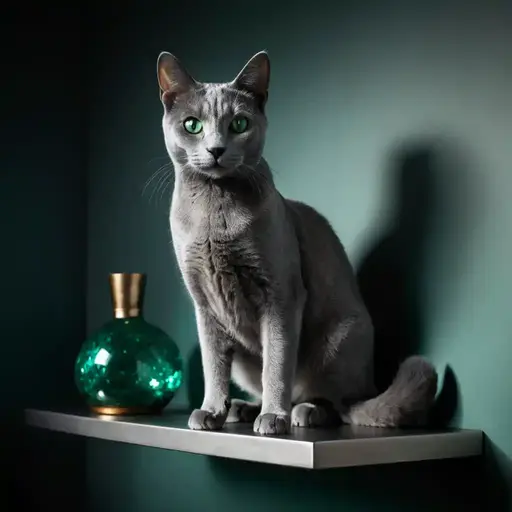
History & Origin – Legend says the Russian Blue descended from ship cats of the 19th century; known for its sleek silver coat and emerald eyes.
Vocalization Level – Reserved; rarely meows and uses a soft “mew” only when necessary.
Temperament – Intelligent, loyal to a single person, enjoys quiet play like puzzle toys.
Grooming Needs – Minimal; a weekly brush keeps the short coat shiny.
Ideal Apartment Setup – A calm, predictable routine with a few hidden toys to engage its curiosity.
Extra Note – Genetic traits favor observation over vocal interaction, making them natural apartment companions.
6. Birman
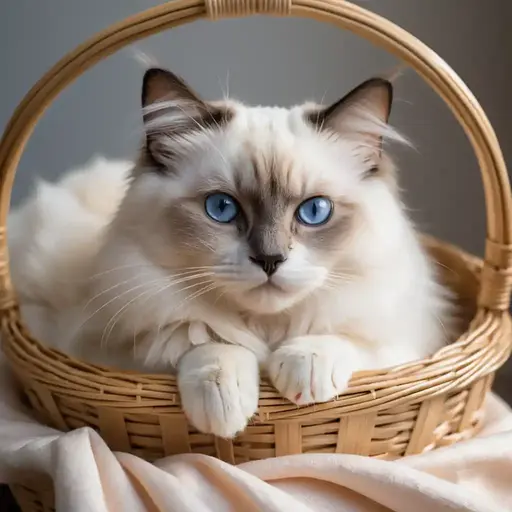
History & Origin – Sacred to Burmese temples, Birman cats were said to accompany monks on voyages and were prized for their striking blue eyes and white “gloves.”
Vocalization Level – Moderate but infrequent; prefers mellow meows and soft purrs.
Temperament – Gentle, people‑oriented, loves to sit on laps and follow owners around.
Grooming Needs – Weekly brushing; occasional grooming of the silky coat.
Ideal Apartment Setup – A comfortable cat cave, a few interactive toys, and sunny windows for lounging.
Extra Note – Many owners describe their Birman as a “fluffy meditation buddy” because of its quiet grace.
7. Exotic Shorthair
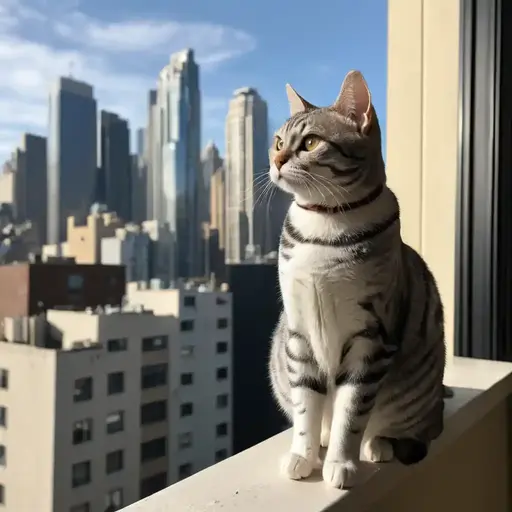
History & Origin – The short‑haired cousin of the Persian, created by crossing Persians with American Shorthairs for a low‑maintenance look.
Vocalization Level – Soft, occasional purrs; rarely demands attention with loud meowing.
Temperament – Calm, affectionate, enjoys lounging but also engages in brief play sessions.
Grooming Needs – Weekly brushing, occasional face cleaning due to the flat nose.
Ideal Apartment Setup – A snug cat bed, simple toys, and a stable routine.
Extra Note – The shortened nose muffles sound, giving the breed a naturally quieter voice.
8. American Shorthair

History & Origin – Descended from working farm cats brought to North America; valued for hardiness and hunting skill.
Vocalization Level – Low; uses short chirps to signal hunger or affection.
Temperament – Even‑tempered, adaptable, gets along with children and other pets.
Grooming Needs – Minimal; weekly brushing keeps the coat in shape.
Ideal Apartment Setup – A few scratching posts, a balanced diet, and regular playtime to satisfy its natural predatory instincts.
Extra Note – Their quiet nature stems from a survival trait favoring stealth over vocal alarms.
9. Scottish Fold

History & Origin – Discovered in the 1960s in Scotland, famous for its unique folded ears and round, expressive face.
Vocalization Level – Soft, chirpy meows; generally not loud.
Temperament – Affectionate, enjoys being near people but isn’t overly clingy.
Grooming Needs – Regular ear cleaning due to the folded ears; moderate brushing.
Ideal Apartment Setup – Soft bedding, low‑traffic zones, and a few interactive toys.
Extra Note – Many owners report their Fold being quieter than a neighborhood puppy.
10. Sphynx
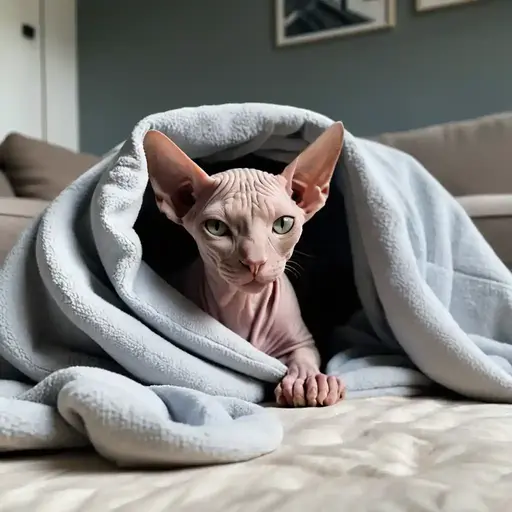
History & Origin – Bred in the 1970s in Canada to achieve a hairless look; known for wrinkled skin and large ears.
Vocalization Level – Communicates through chirps, trills, and frequent head‑butts rather than loud meows.
Temperament – Energetic, highly social, thrives on human interaction and temperature‑controlled environments.
Grooming Needs – Weekly baths to remove oil build‑up; keep blankets warm for comfort.
Ideal Apartment Setup – Warm, draft‑free area, soft blankets, and plenty of playtime.
Extra Note – Though hairless, the Sphynx’s calm vocal style still makes it a top‑ranked quiet breed.
Quiet Cat Breeds Comparison
| Breed | Vocalization Level | Temperament | Apartment Suitability | Grooming Needs |
|---|---|---|---|---|
| Ragdoll | Low | Relaxed, affectionate | High (adaptable) | Moderate (weekly brush) |
| British Shorthair | Low | Calm, friendly | High | Low (quick brush) |
| Persian | Very Low | Placid, lap‑cat | High (quiet) | High (daily brush) |
| Maine Coon | Low | Gentle, sociable | Moderate (needs vertical space) | Moderate (2‑3× weekly) |
| Russian Blue | Low | Reserved, elegant | High | Low (weekly brush) |
| Birman | Low | Gentle, people‑oriented | High | Moderate (weekly brush) |
| Exotic Shorthair | Low | Playful, quiet | High | Low (weekly brush) |
| American Shorthair | Low | Easygoing, adaptable | High | Low (weekly brush) |
| Scottish Fold | Low | Friendly, soft‑spoken | High | Low‑moderate (ear care) |
| Sphynx | Moderate (chirps) | Social, quiet | High (temperature‑controlled) | High (weekly bath) |
Grooming needs vary with coat type; the Sphynx requires regular baths despite being hairless.
Noise Management Strategies Beyond Breed Selection
Even the quietest cat can become vocal if its environment isn’t right. Use these proven tactics to maintain a peaceful apartment:
Environmental Enrichment
- Vertical playgrounds – Install cat trees, wall shelves, or window perches to satisfy climbing instincts.
- Window views – A safe, outward‑facing perch provides bird‑watching entertainment, reducing boredom‑driven meowing.
- Rotating toys – Offer puzzle feeders, feather wands, and interactive toys on a weekly schedule.
Training for Quiet Communication
- Reward silence – Offer treats when your cat chooses to purr or simply sits calmly instead of meowing.
- Pre‑empt needs – Feed, clean the litter box, and provide fresh water before the usual demand times.
- Ignore excessive meows (when needs are already met) – This teaches the cat that silence earns attention.
Health Checks
- Annual vet exams – Rule out dental pain, hyperthyroidism, or urinary issues that can trigger vocalization.
- Monitor behavior – Sudden changes in meowing may signal stress, illness, or environmental discomfort.
Apartment‑Specific Hacks
- Odor control – Use unscented, clumping litter and air purifiers to keep the area fresh for both cat and neighbors.
- Quiet zones – Provide a covered cat condo or a plush tent where your cat can retreat from street noise.
- Gradual introductions – When moving furniture or adding new items, let the cat explore at its own pace.
By combining a low‑vocal breed with these supportive strategies, you create a harmonious living space for both you and your feline roommate.
Common Myths About Quiet Cats
| Myth | Reality |
|---|---|
| Quiet cats are aloof | Many quiet breeds (e.g., Ragdoll, Birman) are highly affectionate; they simply use softer sounds. |
| A quiet cat won’t want attention. | Long coats affect grooming, not vocalization. Persians are among the quietest due to genetics. |
| Hairless cats are always vocal. | Quiet cats often crave companionship but communicate with gentle purrs or head‑butts rather than loud meows. |
| Hairless cats are always vocal | The Sphynx is an exception; while they’re social, they usually chirp softly instead of meowing. |
| Neutered cats become silent | Neutering reduces territorial yowling but doesn’t guarantee quietness; breed and environment matter more. |
Understanding these facts prevents you from dismissing a breed that could be a perfect match for an apartment lifestyle.
Adoption Tips: Finding Quiet Cats at Shelters
- Ask about vocal history – Shelter staff can often tell you which cats tend to be quieter based on observations.
- Request a meet‑and‑greet in a calm room – Observe the cat’s volume when greeting you; a soft “mew” is a good sign.
- Check medical records – Ensure the cat is free from health issues that could cause excessive meowing.
- Consider adult cats – Adults have settled vocal patterns; kittens are naturally more chirpy.
- Use online filters – Websites like Petfinder allow you to search for “low vocalization” or “quiet” in the breed description.
Adopting a quiet cat not only saves a life but also gives you a companion well‑suited for compact living.
FAQs
Can I train a noisy cat to become quieter?
Yes. Positive reinforcement—rewarding calm behavior with treats or affection—helps a cat learn that silence earns attention. Consistently meeting basic needs (food, litter, play) reduces attention‑seeking meows.
Are quiet cat breeds less affectionate?
Not at all. Breeds like the Ragdoll and Birman are known for their cuddly nature despite their low vocal volume. Quietness reflects temperament, not a lack of love.
My cat meows at night. How can I stop it?
Provide a play session before bedtime to tire them out, use white‑noise machines to mask sounds, and avoid responding to midnight meows. If the behavior persists, a vet check can rule out medical causes.
Do quiet cats get bored easily in apartments?
Any cat can become bored without stimulation. Offer vertical space, rotating toys, and interactive puzzles to keep their minds engaged, regardless of breed.
Should I adopt a kitten or an adult cat for a quieter home?
Adult cats are generally quieter, as they’ve outgrown the exploratory chirps of kittenhood. However, many adult quiet breeds—like the Russian Blue—still retain playful spirits while staying low‑key.
Conclusion
Choosing the top 10 quietest cat breeds for apartment living ensures you enjoy a loving companion without disturbing neighbors. Whether you gravitate toward the plush Ragdoll, the regal Persian, or the sleek Sphynx, each breed brings a blend of calm vocalization and adaptable temperament ideal for city dwellers.
Pair the right breed with strategic enrichment, health care, and a thoughtful environment, and you’ll create a peaceful, purr‑filled home that both you and your feline friend will cherish.
Ready to meet your quiet apartment cat? Start by visiting local shelters, using the adoption tips above, and preparing a serene space—your low‑noise partnership awaits.







